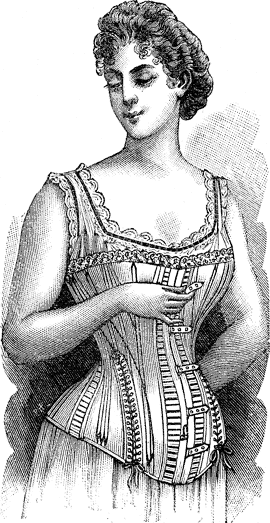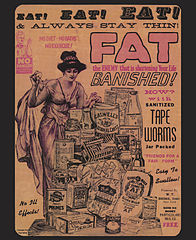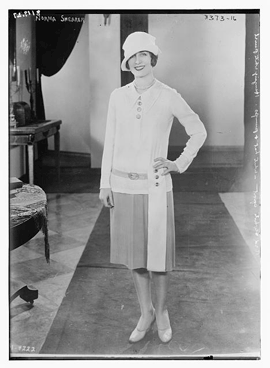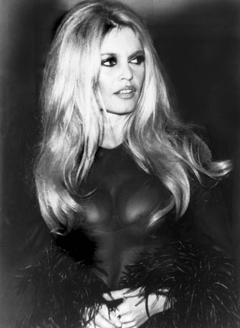For many of us it is not easy to be bold about our bodies! We are constantly bombarded with media images telling us why being anything but tall and thin (but, not too tall if you’re a woman! Unless you’re a model) is unattractive, unappealing and unhealthy!
And it’s no wonder, because all of that shaming imagery works! According to market research reported in U.S. News and World Reports Americans spend upwards of $60 billion annually on weight loss alone! And that does not include medical intervention, such as bariatric surgery, liposuction, cool-sculpting, etc. We drink up the shame and open our wallets to the diet-industrial complex more than any other industry besides beer ($83 billion) and lottery tickets ($69 billion)!
Does anyone else see the contradiction here? We Americans spend money on beer and diets? I don’t know, maybe it’s a gender distinction…
[box] Americans spend most of their money on beer and weight loss![/box]
How About a Different Perspective?
Let me offer you a different perspective. How about we save $60 billion per year by not giving in to the diet-industrial complex’s shame and learning to accept and love our bodies?
But, but, but…. I’m sure you’re thinking. But, being fat is unhealthy. But, I feel good about myself when I look good. But, if I just follow (fill-in-the-blank with whatever fad diet is popular) I can lose the weight!
We’re going to get to the “fat is unhealthy” argument in a bit. But, first let’s address the overall picture of body image.
The Body Through History
Throughout the ages people have tried to exert social control over other people through body shaming. From corsets to shoe lifts to surgical implants people have morphed (and damaged) their bodies in order to fit into the accepted body type of the age. Let’s just take a brief look at women’s bodies in American history.
- Colonial to Civil War Era America: Tiny waistlines, lifted bust lines and grand, but obscured, hips were the accepted body silhouette of the era. Corsets pulled in waists and lifted breasts. Hoop skirts accentuated hips, but folds of cloth left the actual line of the hip to the imagination. Being tall and heavy were signs of health and wealth for men.

- Late 19th to Early 20th Century: The “Gibson Girl” was all the fashion. She was round in breasts and hips, but again with the pulled in hourglass waist from a corset. The best word to describe the Gibson Girl is most likely “voluptuous.” Depictions of the nude female form in the paintings of the time portrayed women with large breasts and lots of curves, especially around the stomach, thighs and bottoms. At the same time, the high-necked, long sleeved fashions of the Victorian Era marked a rejection of the showing of the skin and an over exaggeration of women’s curves through tight corsets, large hoop skirts and bustles which overly exaggerated the derrier.

- At This Same Time: We see an emergence of the first vestiges of the diet-industrial complex. Ads start to appear in newspapers and magazines touting products for “corpulent” women (Amy Erdman Farrell, Fat Shame: Stigma and the Fat Body in American Culture, NYU Press 2011). Many of these products contained extremely harmful substances such as arsenic, strychnine an amphetamines. Or, how about this advertisement for “sanitized tape worms?” Courtesy of the USFDA

- The 1920s: As part of a socio-political phenomenon of the 1920s the boyish, ultra-thin figure of the Flapper emerged. Flat chests and thin hips were part of a rejection of the voluptuousness of the Gibson Girls. And the shortening of skirts, sleeveless, tight, yet boxy Flapper dresses flew directly in the face of the extremely modest Victorian era dress. Curves were defiantly out of fashion!

- The 1950s: It is not until the abundance of the post-war era of the 1950s that we see a reemergence of the acceptance of women with curves. From Marilyn Monroe to Brigitte Bardot, bums, thighs, tummies and breasts were revered again.

Fast Forward:
Let’s fast forward to modern times. Since the 1950s Americans have not again embraced women of a larger size as accepted as the norm. Certainly, we have seen the emergence of gorgeous plus-sized models such as Ashley Graham and Precious Victoria Lee But, they are the exception, not the rule.
We have embraced Twiggy and the heroin chic look. But, we still fat shame people via magazines, advertising, books, movies, documentaries and worst of all (in my opinion) airlines trying to charge large people for two seats because they have decreased seat size and leg room to such an extent that a normal sized person doesn’t fit comfortably, let alone someone who is tall or wide!
The Money Connection:
If we look closely, it all comes back to money!
Airlines are decreasing seat size because they want to fit more passengers in so they can make more money.
The diet-industrial complex wants to sell more weight-loss and muscle building products.
The pharmaceutical industry keeps trying, and failing, to come up with a drug that can be a magic bullet for weight loss because it would be A GOLD MINE!!!
The medical community can sell more bariatric surgeries – a hugely profitable business!
Now, you might be saying, “but Jen, doesn’t it make sense that clothing companies would make more money catering to larger people because plus sized clothing costs more? Doesn’t that debunk your theory? My answer to this is simple: clothing companies are catching on and catering more to plus-sized customers. However, the American apparel industry makes about $12 billion annually. Compare that to the $60 billion of the diet-industrial complex and thems small chickens – ummm I mean billions!
Now, don’t get me wrong. I’m a business owner. I believe in making money. I just don’t believe in making money through shaming other people. I make my money helping other people feel good about themselves and their lives.
The Medical Connection:
It is fair to say that obesity can be linked to serious and life-threatening diseases like heart disease and diabetes. HOWEVER… the accounts of this are greatly exaggerated and the research pointing to the connection between being fat and being unhealthy is largely written (or ghostwritten) by researchers with strong financial ties to the diet-industrial complex. For a more thorough examination of this see Amy Erdman Farrell, Fat Shame: Stigma and the Fat Body in American Culture (2011)
When research that does not have these ties is considered (see research by Linda Bacon, Paul Campos and Glenn Gaesser, and Eric Oliver) one finds that there is a much stronger link between being obese and disease when the social stigma of being fat is considered. In other words, stress:
- Being denied proper medical care (when weight is considered to be a malady research has shown that medical doctors are prone to blame the fat and not search for further reasons for a person’s symptoms).
- Being denied jobs. Research shows that fat people are overlooked for jobs that they are qualified for.
- Social Stigma from media images, to comedic shame for the sake of a laugh, to the sorrowful looks and adverted eyes of people on the street.
All of these factors are MUCH more likely to be causal factors in a person’s health than their weight.
Finally & Most Importantly:
The most important factor to consider in respect to health is that people who embrace positive emotions and practice stress-reduction and mindfulness live the longest healthiest lives. So try these on for size:
Serenity
Joy
Hope
Inspiration
Pride
Resilience
Happiness
Amusement
AND of course, my favorite GRATITUDE!
With Love & Light!
Jen
ALL IMAGES ARE COURTESY OF WIKIMEDIA OR THE GENEROUS PHOTOGRAPHERS WHO DONATE THEIR PHOTOS ON UNSPLASH.COM.



